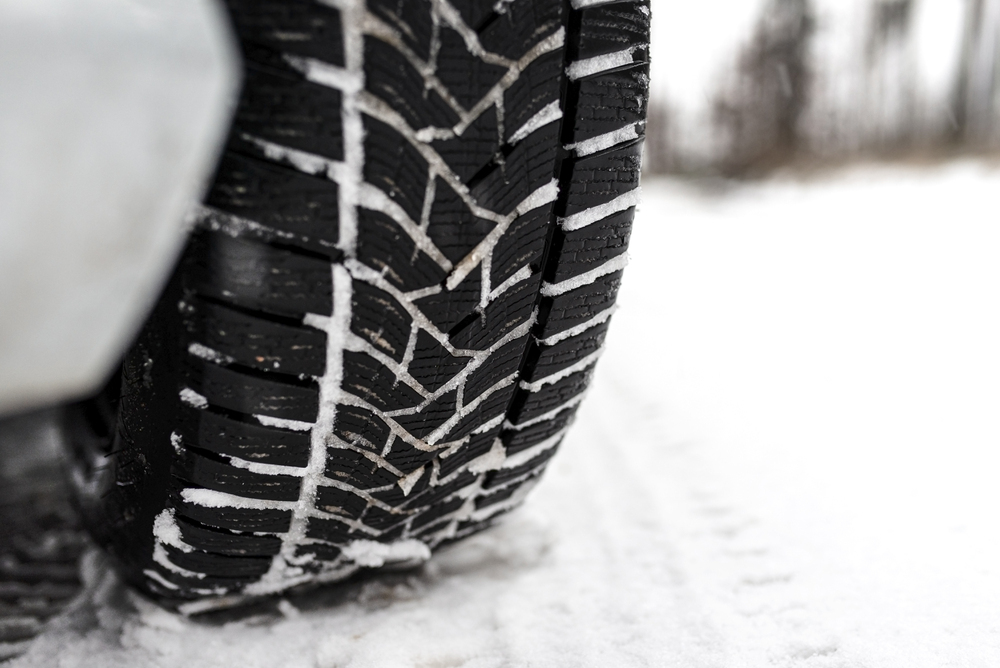Winter driving in Camden County, NJ, comes with its own set of challenges, especially with icy roads, sudden snowfalls, and slushy conditions. As a driver, it’s up to you to make sure that your vehicle’s tires are in top condition. Having tires that are up for the task of driving wintry roads makes a huge difference between staying safe or facing hazardous skids and collisions. Winter tire checks help prepare your vehicle for the harsh conditions of New Jersey’s winter and provide peace of mind on slippery roads.
Key Takeaways
- Regular winter tire inspections prepare your vehicle for icy and snowy conditions, reducing the risk of skids and collisions.
- Worn tires lead to reduced traction, longer stopping distances, higher chances of blowouts, and compromised steering, all of which are more dangerous in winter.
- Cold temperatures lower tire pressure, affecting handling on icy roads. Adjust tire pressure weekly to maintain optimal grip and wear.
- Tires with at least 2/32 of an inch tread depth are safer on slippery surfaces, improving braking and cornering.
- Winter tires are specifically designed to handle cold, icy conditions and can improve control and stopping power below 45°F.
Why Winter Tire Checks Matter
Cold weather significantly impacts tire performance, even before snow or ice appears. As temperatures drop, tire rubber stiffens, reducing traction and compromising your control over the vehicle. This is especially dangerous on slick roads where stability and grip are crucial. Winter tires, with their specialized rubber and tread patterns, maintain flexibility and grip better in cold temperatures, but even all-season tires need special attention in winter. Regular tire checks help avoid preventable skids, collisions, and related repair costs.
The Dangers of Driving in the Winter with Poor Tires
As mentioned previously, cold weather does a number on your tires. Snowy and icy conditions demand the most from tires, leading to rapid deterioration of the tread. When that happens, the risk of certain dangers increases:
Reduced Traction
When tread depth is low, tires lose the ability to grip. Water, snow, and slush can’t be easily channeled away from the tire’s surface. That increases the risk of hydroplaning or slipping on ice, which also raises the risk of swerving out of control. On Camden County’s busy roads, that’s a risk you don’t want to take!
Longer Stopping Distance
Poorly maintained or worn tires increase stopping distances, which is especially dangerous on slick, snowy roads. The lack of adequate tread depth means less rubber contacts the road, which makes it harder to stop quickly. This can lead to rear-end collisions or other accidents when unexpected stops are necessary.
Increased Chance of Blowouts
Cold temperatures cause the air inside tires to contract, often leading to underinflation. Underinflated tires are more prone to blowouts, particularly if they are already worn or damaged. A blowout on an icy road can be catastrophic, as it’s challenging to regain control under these conditions.
Poor Steering and Handling
Is your car feeling difficult to steer or less responsive? Check the tires. Worn or misaligned tires make it harder to control your vehicle, leading to increased incidences of skidding and sliding.
Increased Risk of Tire Damage
Winter roads are often riddled with potholes due to freezing and thawing cycles. Tires in poor condition are more vulnerable to damage from hitting potholes. That means it’s easier to get punctures, sidewall bulges, or even complete tire failure.
What to Inspect on Your Tires Before Driving This Winter
Now that you know the dangers of driving around with tires that are in poor condition, let’s discuss how to spot issues on your tires. Here are some key components to inspect:
- Tire Pressure: Cold weather causes air to contract, leading to lower tire pressure. Low tire pressure reduces traction, affecting handling on icy roads. Checking tire pressure weekly and adjusting it to the recommended level maintains optimal grip and reduces wear.
- Tread Depth: Worn tread reduces a tire’s ability to channel away snow, ice, and water, making skids more likely. A tread depth of 2/32 of an inch or less is unsafe for winter driving. Ensuring your tires have adequate tread depth improves braking and cornering performance on slippery surfaces.
- Tire Type: Winter tires are specifically designed to handle cold, icy conditions. If you frequently drive in snowy areas, consider switching to winter tires for increased control and stopping power. They are made to grip better than all-season tires in temperatures below 45°F, which is common in New Jersey winters.
- Rotation and Alignment: Regular tire rotation and alignment keep wear even across all tires, maximizing their contact with the road. Misaligned wheels can make it harder to control the vehicle, especially on icy roads, so ensure alignment is checked regularly.
Need a Collision Repair Center in Camden County, NJ This Winter?
Winter driving in and around Camden County, NJ can be challenging. Staying on top of your vehicle’s maintenance and ensuring you have good tires for the winter are two ways you can reduce the risk of a collision. That is why we at Elmer’s Auto Body offer these tips to keep you safe! If you do find yourself in an auto accident this winter, you can call one of our three South Jersey locations to get the repairs you need done.

